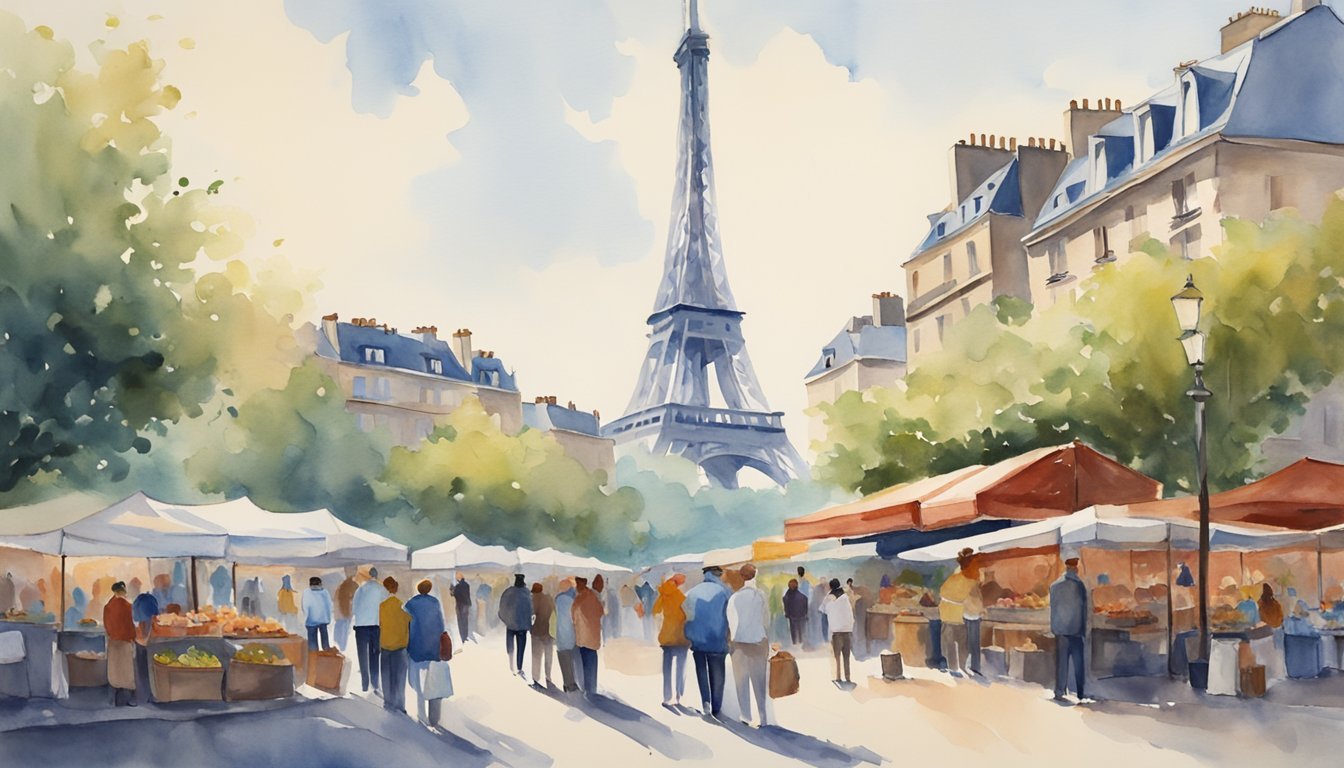Historical Significance
Design and Creation
The Eiffel Tower was originally designed as a temporary structure for the 1889 World’s Fair, held in Paris to celebrate the 100th anniversary of the French Revolution. Gustave Eiffel, a renowned civil engineer and architect, was the mastermind behind the tower’s design and construction. The Eiffel Tower was constructed mainly of iron, with a square base measuring 125 meters across and a height of 300 meters.
During its construction, the Eiffel Tower faced harsh criticism and controversy from local artists and intellectuals. They believed the structure would be an eyesore and would tarnish the beauty of Paris. However, Gustave Eiffel defended his project, ensuring that its architectural design would ultimately become an iconic symbol of France.
World’s Fair and Gustave Eiffel
The Eiffel Tower was inaugurated on March 31, 1889, and opened to the public on May 15, 1889, coinciding with the first day of the World’s Fair. It quickly became a popular attraction, drawing millions of visitors, including prominent figures such as Thomas Edison.
At the time of its completion, the Eiffel Tower held the title of the world’s tallest structure, surpassing the Washington Monument. It retained this title until the completion of the Chrysler Building in New York City in 1929.
Over the years, the Eiffel Tower has played a significant role in global history, witnessing events like World War I and World War II. During these wars, the tower served various purposes, such as a communication tower and an observation post. Moreover, the Eiffel Tower has been referenced in numerous literary works, such as those by Guy de Maupassant, who reportedly claimed to dislike the structure yet frequently dined at its restaurant to avoid seeing it from afar.
Today, the Eiffel Tower stands as a symbol of French ingenuity, overcoming initial criticism to become an enduring and beloved landmark. Its historical significance, alongside its captivating design, secures its place as one of the most iconic and recognizable structures worldwide.
Visiting the Eiffel Tower

Exploring the Levels
The Eiffel Tower, a wrought iron lattice tower in Paris, France, is a marvel of 19th-century engineering and the city’s most famous tourist attraction. It has three levels for visitors to explore. The first and second levels can be accessed using either the elevators or stairs, while the third level, the summit, can only be reached by taking an elevator.
The first level offers a beautiful view of the Champ de Mars and holds a museum dedicated to the Eiffel Tower’s history. The second level houses the Jules Verne restaurant and an observation deck providing stunning views of the Paris skyline. Make sure to purchase tickets to explore all the levels and avoid disappointment.
Dining Options
There are two restaurants located within the Eiffel Tower. The first is 58 Tour Eiffel, located on the first level of the tower. This family-friendly option offers a wide range of French cuisine in a modern setting with amazing views. The second restaurant, Le Jules Verne, is situated on the second level, providing a more high-class dining experience. This Michelin-starred restaurant offers refined meals accompanied by breathtaking views of the City of Lights.
Events and Entertainment
The Eiffel Tower is not just a stunning monument; it also hosts various events and entertainment options throughout the year. The tower’s sparkling lights brighten the Paris skies every evening, creating a mesmerizing view for tourists and locals alike. Special light shows for certain occasions, like New Year’s Eve or the French Independence Day, add extra magic to the iconic scene.
Aside from the light shows, the Eiffel Tower’s surrounding area, Champ de Mars, is a popular location for concerts, events, and picnics. Whether you’re visiting Paris for the first time or are a frequent visitor, the Eiffel Tower offers unforgettable experiences and spectacular panoramas that should not be missed.

